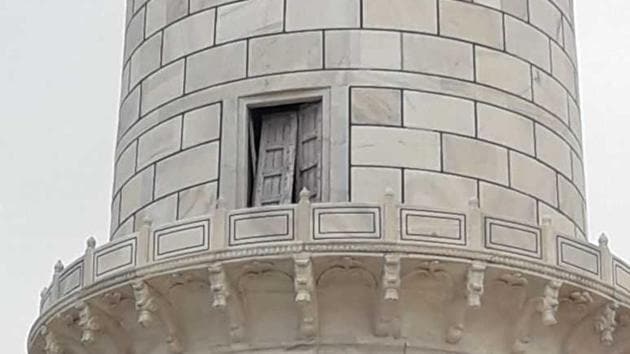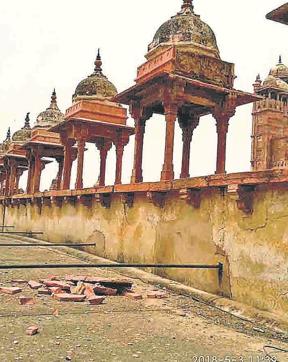Storms damage Taj Mahal, Fatehpur Sikri for second time in a month
Wednesday’s storm struck at a time when the authorities were still trying to repair damage to the monuments caused by a similar weather phenomenon on April 11.
The Taj Mahal and Fatehpur Sikri were among several historical sites in Uttar Pradesh that suffered damage in an unexpected thunderstorm that swept through northern India on Wednesday.

Besides causing considerable loss to life and property across the region, the weather phenomenon hampered efforts by the Archaeological Survey of India (ASI) towards repairing damage suffered by the monuments in a similarly destructive thunderstorm last month.

Several portions of the Taj Mahal, including the royal gate, a chhatri (top cup) and pillars at its southern entrance, had toppled down in the first thunderstorm on April 11. The authorities had prepared an estimate of the damages and forwarded it to the ASI director general’s office in Delhi. Following this, preliminary restoration work was initiated.
However, the ASI barely made any headway into the project when the second storm struck – uprooting trees on the premises and displacing a wooden door in the northwest minaret.
“The door will be repaired soon,” assured Ankit Namdev, the ASI’s conservation assistant at the Taj Mahal.
The township of Fatehpur Sikri, once the capital of the Mughal empire, also suffered as much damage in Wednesday’s thunderstorm. “The boundary wall of the Agra Gate barrier, the chhajja (extension) at the Janana Rouza, the plaster of the dargah and a resting stone at the Rang Mahal were damaged due to high-velocity winds,” said ASI official Kalandar Bind. Other casualties of the freak weather phenomenon included half-a-dozen trees on the premises and marble inlay pieces of the Buland Darwaza.
“A complete estimate of damage is being prepared,” said Bind.






